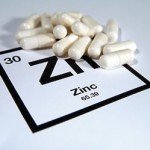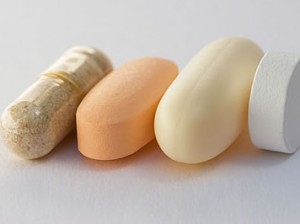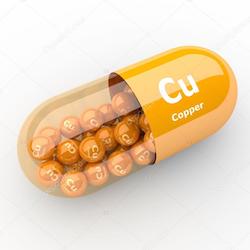~ Below is a quick review of recent science that is valuable for your practice. ~
Zinc and Liver Disease ~ Have you tested your patients at risk for liver disease for serum zinc? New research demonstrated that zinc naturally inhibits the inflammatory and antiviral effects of interferon lambda 3 (IFN-λ3), a protein strongly associated with tissue damage in chronic liver disease. The study from Westmead Institute’s Storr Liver Centre in collaboration with the Centre for Virus Research and Kirby Institute shows that serum zinc may benefit liver disease in ways researchers never expected.
 The study, led by Dr Scott Read and Associate Professor Golo Ahlenstiel, demonstrated that zinc naturally inhibits the inflammatory and antiviral effects of interferon lambda 3 (IFN-λ3), a protein strongly associated with tissue damage in chronic liver disease. Lead author of the study, Dr Read, said the study provides the first evidence that zinc can act as a potent and specific inhibitor of IFN-λ3 in the context of viral infections such as hepatitis C and influenza. Read’s key findings include:
The study, led by Dr Scott Read and Associate Professor Golo Ahlenstiel, demonstrated that zinc naturally inhibits the inflammatory and antiviral effects of interferon lambda 3 (IFN-λ3), a protein strongly associated with tissue damage in chronic liver disease. Lead author of the study, Dr Read, said the study provides the first evidence that zinc can act as a potent and specific inhibitor of IFN-λ3 in the context of viral infections such as hepatitis C and influenza. Read’s key findings include:
- “Zinc inhibits numerous facets of the liver’s immune response to viruses that may be mediated by IFN-λ3.”
- “Zinc interferes with IFN-λ3 binding to the interferon lambda receptor, which results in decreased antiviral activity and increased viral replication both in vitro and in vivo.
- “Zinc also blocks the inflammatory activity of IFN-λ3, which has been strongly linked to accelerated progression to liver cirrhosis in viral and non-viral liver disease.
“Our data suggests that serum zinc levels in patients with chronic hepatitis C are genetically predetermined by the IFN-λ3 polymorphism, confirming the inhibitory role of zinc in vivo. The data highlights the potential for zinc to be used as a simple and effective treatment against acute and chronic inflammation in the liver,” Dr Read concluded. Associate Professor Ahlenstiel and his team are now working towards a therapeutic intervention for IFN-λ3-mediated chronic disease. This research was published online in Nature Communications.
Metals and Minerals as Antibiotic Alternatives ~ As antibiotic resistance presents a rising health problems, researchers are exploring alternatives to antibiotics. Two such examples are metals such as silver, zinc, and copper and organic acids such as food acid commonly used as a food preservative.
The research, published in Nature Scientific Reports, showed that when organic acids and metals  were combined at a low concentration, the combination was extremely effective in eradicating pathogenic bacteria such as cholera, salmonella, and pseudomonas, as well as eliminating bacteria that attack agricultural crops such as tomatoes, melons, and apples.
were combined at a low concentration, the combination was extremely effective in eradicating pathogenic bacteria such as cholera, salmonella, and pseudomonas, as well as eliminating bacteria that attack agricultural crops such as tomatoes, melons, and apples.
“Combining these two types of substances is far more effective than using each one separately,” said Assistant Professor Oded Lewinson in the Technion’s Rappaport Faculty of Medicine. “Called ‘synergistic inhibition’, this combination enables the use of extremely low concentrations of metals and food acids for preserving food and spraying crops.” He added that lowering the concentration of the substances has significant positive implications for the environment and human health. This research was published in Nature Scientific Reports.





